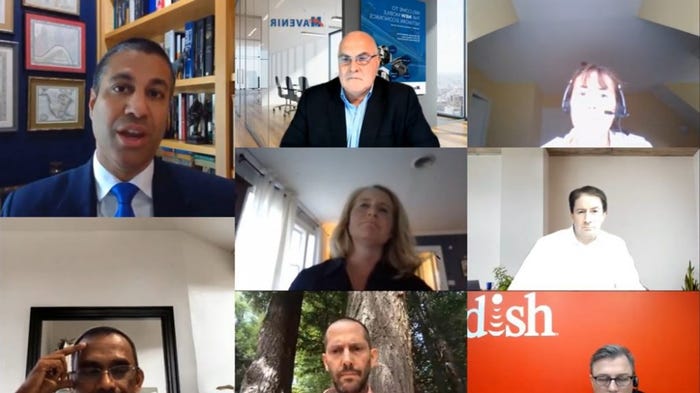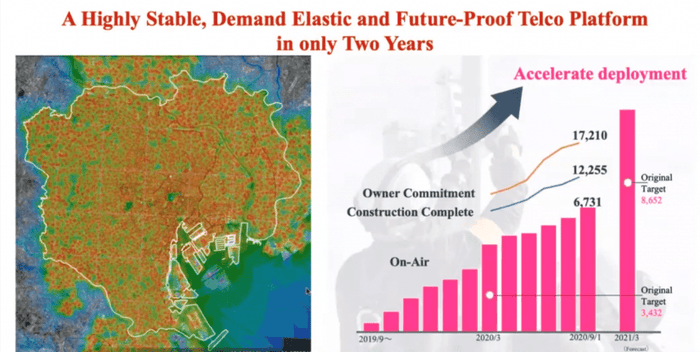Ajit Pai and his commissioners hosted an online forum on 5G Open Radio Access Network to promote the technology as an opportunity for American companies to regain leadership in the mobile market.
September 15, 2020

Ajit Pai and his commissioners hosted an online forum on 5G Open Radio Access Network to promote the technology as an opportunity for American companies to regain leadership in the mobile market.
The forum was originally scheduled for March but was push back due to COVID-19. The high calibre participants included all five FCC commissioners under Pai, US and overseas telecom operators, vendors, think tanks, and academia. The Department of Commerce dispatched a representative, and Mike Pompeo, the US Secretary of State, also sent in a recorded video message.

Ajit Pai opened the sessions by framing OpenRAN in both a security context, which was also Pompeo’s angle, and an economics context. He highlighted the security risk of Huawei’s equipment on account of the vendor’s close relations with China’s ruling Communist party and the country’s national intelligence law. He believed “the long-term costs of using insecure equipment (from Huawei) are likely to outweigh any short-term savings.”
On the other hand, he also saw the current stronghold on 5G equipment market by a few suppliers, despite their trustworthy background, not conducive to innovation or efficiency improvement. “Vendor diversity is useful in terms of price competition, avoiding the lock-in problem, and ensuring a backup supplier, among other things,” he said.
A couple of common themes ran through the six-hour long forum (excluding a lunch break) of panel discussions and the FCC Commissioners’ keynotes. The first is the resolve to bring America back to the leadership position in the telecoms industry. There was plenty of nostalgia. Robert Blair, Director of Policy and Strategic Planning in the Department of Commerce, lamented the fall from grace of yesterday’s giants Lucent and Motorola, while Jane Harman, the Congresswoman turned CEO of Woodrow Wilson Center, was not impressed by the American surrender of the front seat in the standardisation bodies. “If we are not setting the standards, someone else is. … It is a big disadvantage which will only get bigger if we don’t change course,” she said.
The participants saw in OpenRAN an opportunity for American companies to regain that lost leadership. The logic goes that by adopting open standards and open interfaces and disintegrating the networks, entry barrier to the telecoms business is lowered. Networks become the platform for innovations to happen on top, in particular software innovations which American companies have been very good at.
Brandan Carr, one of the FCC Commissioners, likened disintegrating the telecoms networks to the unbundling of IBM’s vertically integrated computer business by Microsoft. Dell’s John Roese quipped that “the telecommunications wireless industry is the last one we have done it (unbundling) to. we have done this to compute, storage, networking, virtualization, software development, application delivery. The one outlier that is not in this modern format is telecom.”
The second strong theme is the belief that OpenRAN is able to deliver the results it promises. This sentiment was shared by both OpenRAN vendors and challenger operators. Jio is working on over 700 sites a day thanks to its embrace of OpenRAN, Mathew Oommen, its President claims. Rakuten, OpenRAN’s poster boy, has delivered the network faster than originally planned by using OpenRAN and is on course to cover 70% of Japan’s population by March next year.

Tareq Amin, Rakuten’s CEO, saw the most exciting part of OpenRAN as security, boosted by the end-to-end visibility, which he used to justify the decision to scrap the original plan to use Huawei to build its network. OpenRAN’s security credentials were also backed by DISH, the most active American carrier to embrace OpenRAN. Stephen Bye, DISH’s EVP and Chief Commercial Officer, said the company has adopted a “zero trust model” towards all vendors, and its staff’s expertise in IT systems has been used in assessing security of vendors for the open architecture.
There was also a note of caution. GlobalFoundries, “the only US supplier of chips. The rest of the chipmaking industry is offshore”, according to Peter L. Gammel, the company’s VP and CTO of the Mobile and Wireless Infrastructure business unit, forecasts that only 10% of mobile networks will be using OpenRAN by 2025. On the incumbent operator side, AT&T expressed concerns over OpenRAN’s capability to deliver the same experience to the operator’s existing customers. This is in contrast to the strong enthusiasm from DISH, though DISH also conceded that it has the luxury of not having any legacy networks or legacy systems like OSS and BSS.
The cautious tone was shared by Nokia. Marcus Weldon, Nokia’s CTO and the President of Bell Labs, after defending Nokia’s track record of openness, cautioned that although ORAN-based technologies can meet the base level performance requirements, more work needs to be done to extend on ORAN specs to reach higher performance. He also had a not too subtle dig at Ajit Pai by suggesting that the industry should not dive into a “start-ups good, incumbents bad” mindset. A hybrid approach is preferred.
There were also discussions on the government’s role in promoting OpenRAN. Suggestions included government, including the FCC, should fund OpenRAN compliance in network building, should help jumpstart start-ups, and should support OpenRAN R&D. Nvidia’s Soma Velayutham and CommScope’s Morgan Kurk argued that such support is justifiable on two accounts: telecoms is a strategic industry, and the government should help level the playing field as vendors in certain countries are being supported by their governments.
Meanwhile, Michael O’Rielly, one of the FCC Commissioners, believed OpenRAN could only succeed without government intervention, by which he meant no government mandates of technology choices, governments remaining vendor neutral, and process remaining voluntary.
In general, the arguments for OpenRAN, and even the reservations, did not bring many surprises. However, the high profile of the event itself, and its positioning of OpenRAN as an opportunity for US companies to climb back to the perch of the telecoms industry, should add to the technology’s impetus. This should be especially true in the US, notwithstanding the sometimes cringeworthy chest-thumping nationalism.
About the Author(s)
You May Also Like







.png?width=300&auto=webp&quality=80&disable=upscale)

.png?width=300&auto=webp&quality=80&disable=upscale)
_1.jpg?width=300&auto=webp&quality=80&disable=upscale)



.png?width=800&auto=webp&quality=80&disable=upscale)